The signs that your cat might have fleas are unmistakable: your cat is scratching and itching nonstop, you see bits of what appear to be dirt in its coat or on its bed, or worst of all, you are getting bitten. Fleas may be a natural (and unpleasant) part of life with a cat, but they are also potentially harmful to your pet and household.
Fortunately, you don't automatically have to opt for strong, toxic chemicals to eliminate or discourage fleas. There are numerous natural flea treatments for cats, including lemons, cedar, and various spices such as lavender that can help treat your flea infestation.
Before you start a home remedy, have a consultation with your veterinarian regarding your feline flea problem. Once you have the okay to treat the problem naturally, here are some at-home remedies you can try that may help get rid of your cat’s flea problem for good.
Cedar Chips
It’s a known fact that fleas hate the smell of cedar chips—and there’s a chance your cat may not be too fond of it, either. Try spreading cedar chips around your cat’s bedding or outdoors in your garden. BUt avoid using cedar essential oil, as it may be harmful to your cat if ingested.
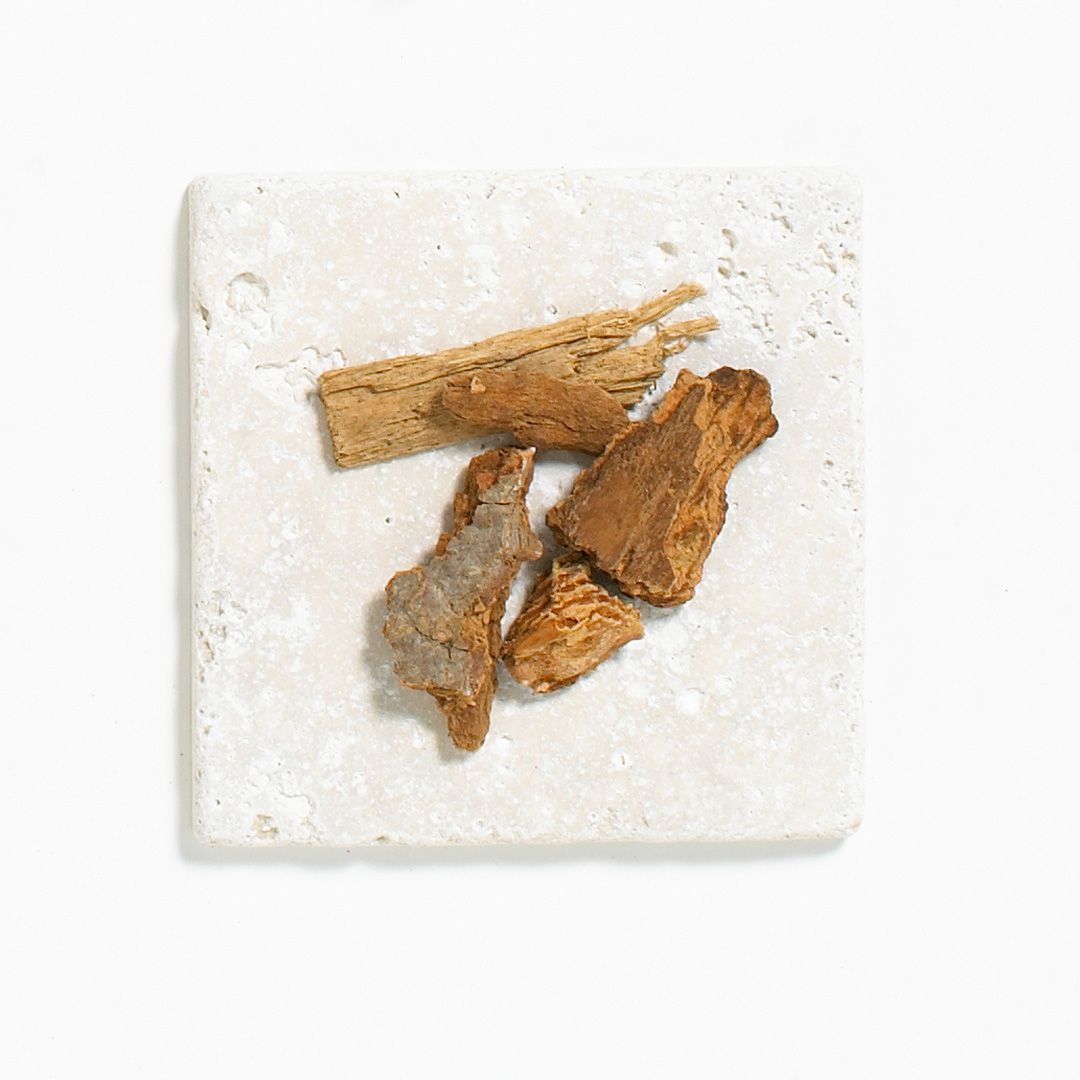
Lemons
One of the most effective natural flea killers is citric acid, which makes lemon juice a widely-recognized home remedy for treating fleas. You can spray your cat’s bedding with a solution made by boiling a cut lemon or two (let the lemons steep for a few hours) and then draining the liquid before transferring it to a spray bottle. If you’re concerned about any leftover fleas and flea eggs, add a cup of lemon juice to your laundry while washing your pet’s bedding to help exterminate any remaining bugs.
Warning
Avoid applying lemon directly to your cat's fur. This may upset your cat and can be harmful if ingested.
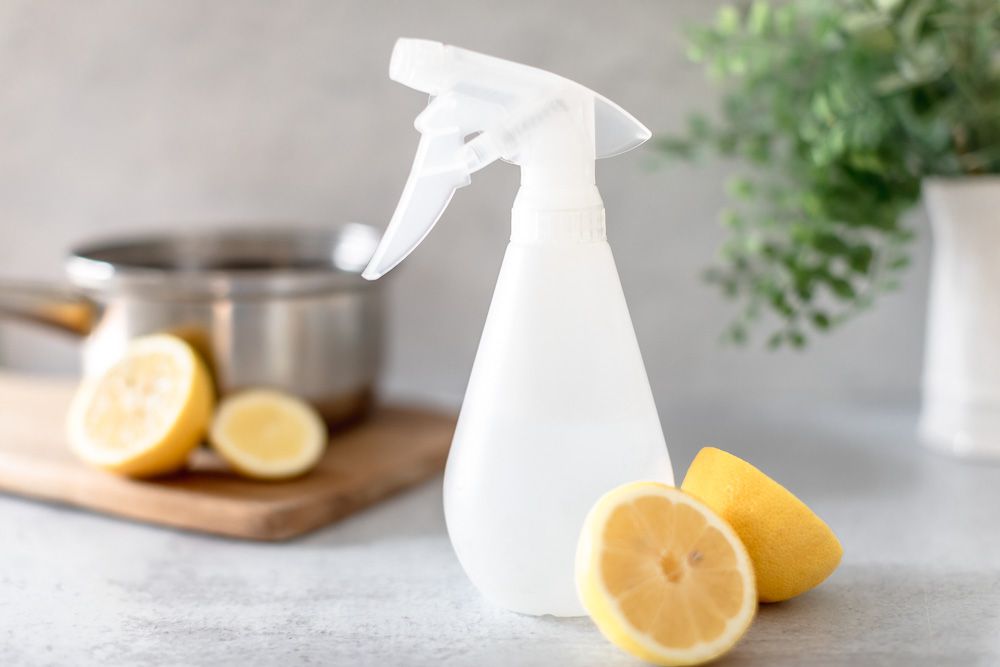
The Spruce / Ana Cadena
Rosemary and Cumin
One of the easiest things you can do for a flea-infested cat is to spice up their life with natural ingredients you might find in your kitchen.
Fleas don’t particularly care for the smell of rosemary; try grinding the dried leaves into a powder and then sprinkling it in the areas where your cat tends to hang out in your home, such as its bed, the couch, or carpets. You can also steep the dried rosemary leaves in boiling water for 30 minutes, strain away the leaves, and then apply a small amount of the room-temperature spray directly to your pet's coat.
If your cat won’t allow you to apply topical treatments to their fur, you can try mixing a small amount (less than a teaspoon) of cumin into your cat’s food. The spice will make your cat’s skin very unappetizing to fleas.
If you don’t have any of these spices on hand, a little bit of table salt can also do the trick, as it helps dehydrate and kill the fleas on your cat. Better yet, it works to kill fleas and flea eggs that may be lurking on your carpet (just sprinkle it on), or when mixed with water, salt can be used to treat hard surfaces.
Warning
These spices are a safe alternative to garlic powder, which can be toxic to cats in large doses.
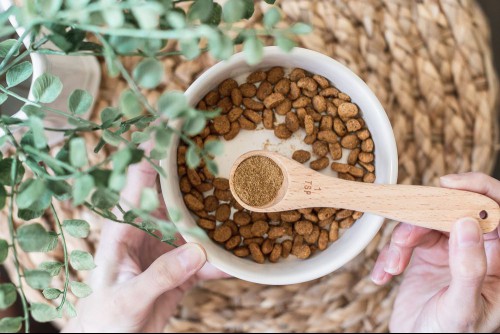
The Spruce / Ana Cadena
Apple Cider Vinegar
Another grocery store product that fleas don’t particularly enjoy is apple cider vinegar. While it’s not effective at killing the bugs, apple cider vinegar can cause fleas to jump from your cat’s body so that you can better tackle the issue, making it a great first attack in your personal war against fleas. Try mixing two parts apple cider vinegar with one part water and spraying it onto your cat’s coat. Fleas can be a stubborn bunch, so you may have to undergo a few rounds of apple cider vinegar treatment to see results.
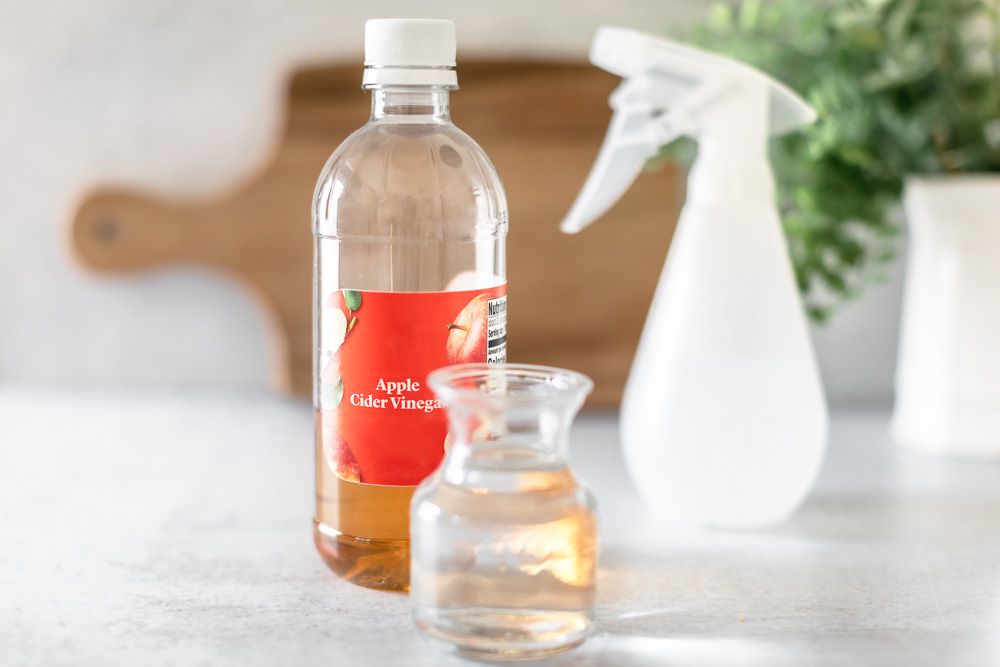
The Spruce / Ana Cadena
Dish Soap
Believe it or not, even the most gentle formulations of dish soap have proven to be very effective at exterminating fleas. The dish soap breaks down the flea’s exoskeleton and kills them within minutes, even after being diluted. Simply wet your cat’s coat—a spray bottle will do the trick— and gently lather the dish soap into their fur (focusing on areas where fleas tend to hide) before rinsing. Don't bathe your cat too often with dish soap, as it can be very drying to the skin and cause issues.
To use dish soap to trap and kill fleas that have made your home their permanent residence, you can try filling a shallow dish with warm, soapy water and placing it close to a source of light. They’ll be drawn towards the light and drown in the liquid.
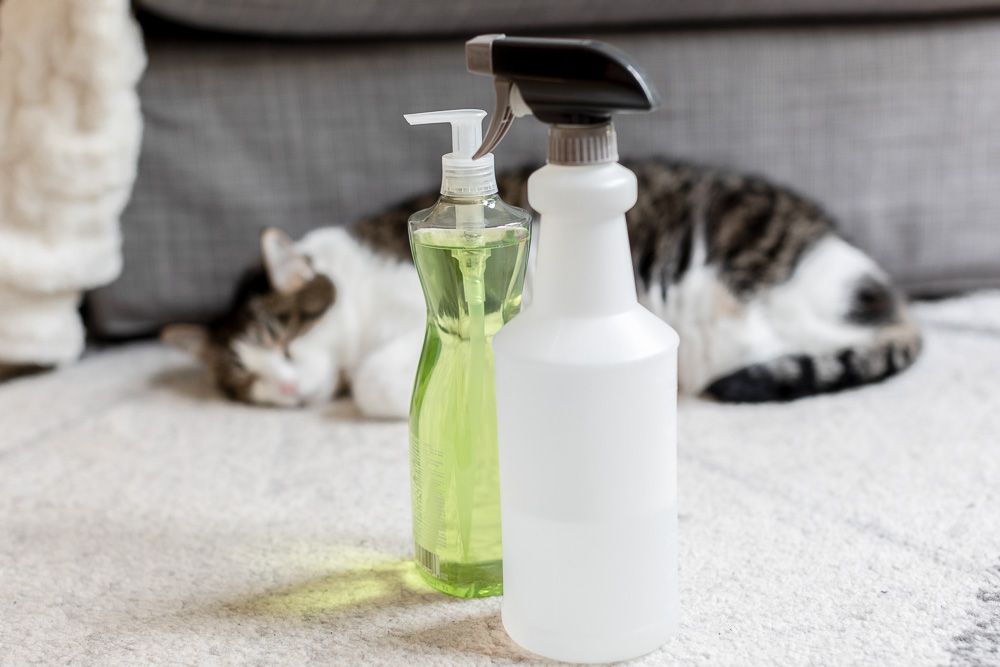
The Spruce / Ana Cadena
Lavender and Chamomile
A gentle way to soothe your pet’s skin—and maybe even encourage the cat take a little nap—lavender is a powerful, fast-acting agent against fleas. In fact, some studies have shown that formulas containing diluted lavender were just as effective at killing fleas as commercial chemical sprays. To put lavender to good use in your home, let fresh lavender steep in water overnight before straining the liquid and spraying it onto your cat’s coat (no need to rinse).
Another compound that’s known for soothing the skin, loose chamomile tea can also be used to attack fleas on your feline friend. Simply steep the tea, and when it’s fully cooled, apply the liquid to your cat’s coat. You can repeat both treatments daily for as long as needed.
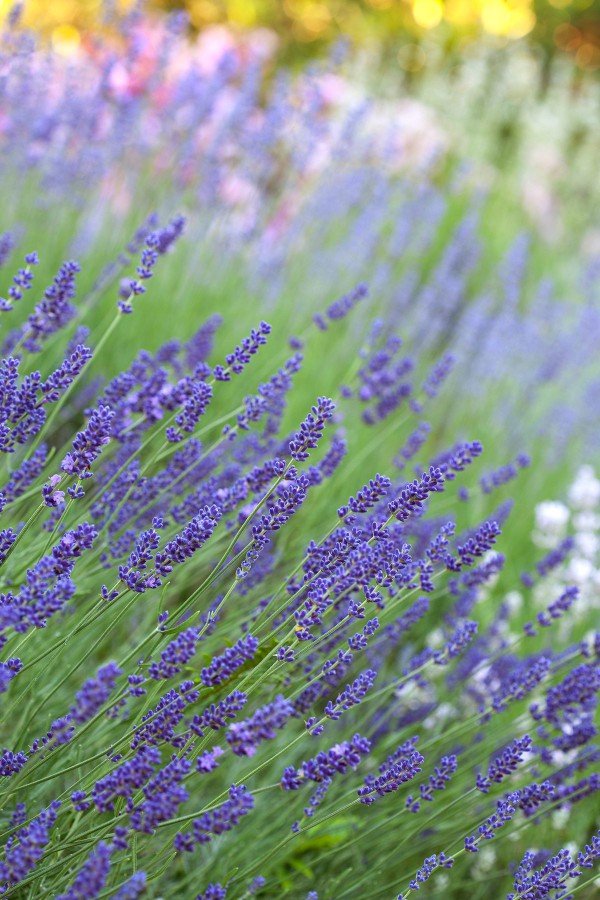
Coconut Oil
Coconut oil is loaded with healthy fats that soothe itchy skin, shine up a dull coat, and best of all, smother fleas and other external parasites. You can use coconut oil to relieve your feline's flea problem, but be warned that you'll also need to bathe your cat. Start by bathing the cat with a cat flea shampoo, and then smooth coconut oil over the cat's damp fur. Keep your cat contained in the bathroom for a couple of hours while the coconut oil works its magic, and then rinse your cat to remove the oil and the smothered fleas. Dry your cat thoroughly with a soft towel, and brush their coat to remove any lingering oil or fleas.
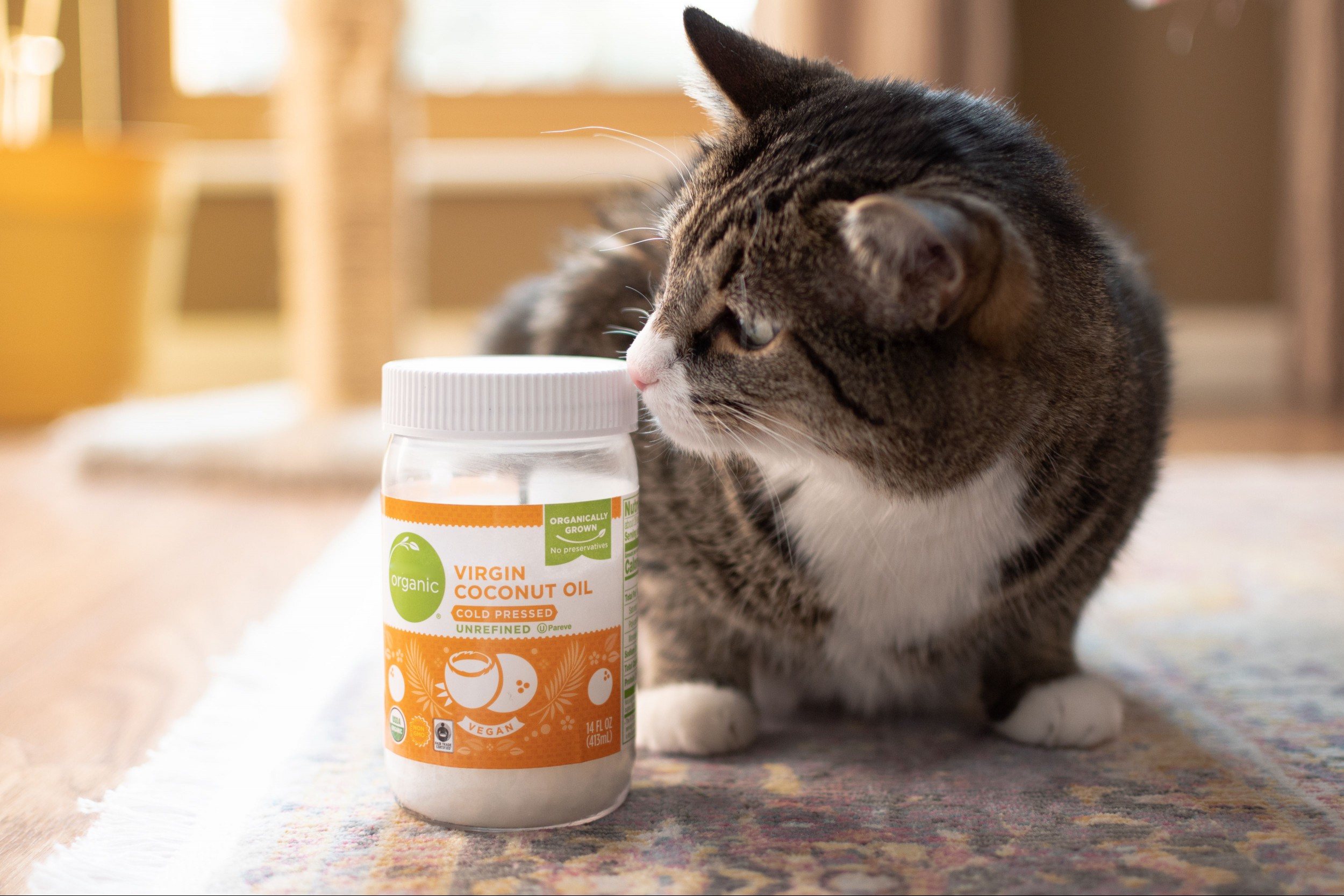
The Spruce / Meg MacDonald
Flea Comb
One very effective method for removing fleas from your cat naturally is a flea comb. These are combs with very fine, closely spaced teeth that physically remove fleas from the cat's coat. Keep a bowl filled with soapy water next to you while you work, and dunk the fleas into the water with each pass of the comb through the cat's fur. The fleas will drown in the soapy water and your cat will gain sweet relief not only from the insects' bites but also from the annoyance of loose, shedding fur. A win/win for you and your pet.
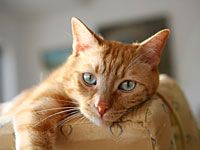
Oregano Oil
Because of a natural compound known as carvacrol, oregano oil can be very effective at removing fleas. Start by mixing one teaspoon of oregano oil with three teaspoons of olive oil and apply tiny amounts of the solution to areas of your cat's body where fleas tend to congregate, like your cat’s ears, stomach, tail, and neck. Be sure to use small amounts to prevent your cat from ingesting too much while grooming.
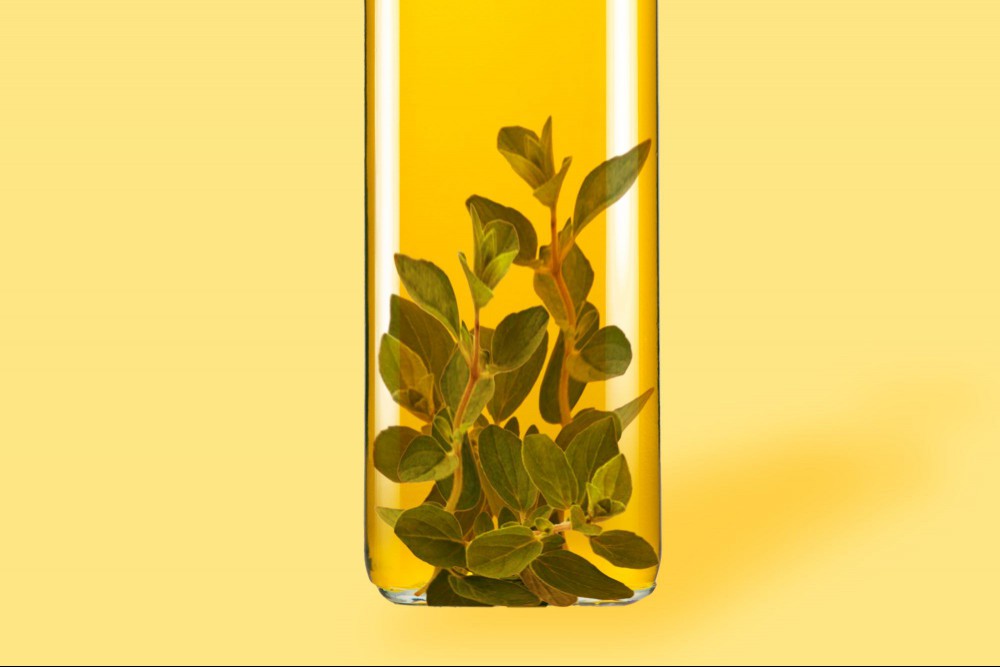
- What do fleas look like on cats?
Fleas appear as small bugs that are black or brown in appearance (and can sometimes be seen jumping) or tiny black specks in the cat's fur. The black specks are commonly called "flea dirt," which is actually flea excrement.
Where do fleas hide on cats?On many pets, fleas like to hide in areas that are warm and "protected," like the groin, ears, folds of the neck, or armpits. These are the first places you should check, though if your cat has a particularly bad infestation, there's a good chance fleas will be present (and obvious) all over their body.
How big are fleas on cats?Fleas are very tiny—less than 1/8-inch long—and may be difficult to see on your cat, especially if they have dark brown or black fur. It's a good idea to use a strong flashlight when looking for fleas in your cat's fur.
How do I check for fleas on cats?To determine whether your cat has fleas, you should comb gently through their fur to look for scurrying fleas or signs of flea excrement. You can use your fingers to part and look through your cat's fur, or invest in a flea comb which will be helpful for cats with thicker fur.
If you suspect your pet is sick, call your vet immediately. For health-related questions, always consult your veterinarian, as they have examined your pet, know the pet's health history, and can make the best recommendations for your pet.Related Article
 cat-nutrition-and-food
cat-nutrition-and-foodWhat to Know Before You Buy Food and Water Bowls For Your Cat
Buying food and water bowls for your cat isn't a simple matter of picking the cutest pattern or
 cat-nutrition-and-food
cat-nutrition-and-foodHow Much Water Does an Adult Cat Need to Drink?
Cats need fresh drinking water every day for optimum health. Water is essential for helping the kid
 senior-cats
senior-catsHow to Stop Litter Box Problems in Senior Cats
Senior cat litter box problems happen all too often and aren't necessarily a reflection of the cat'
 cat-symptoms
cat-symptomsWhat to Do if Your Cat Is Vomiting White Foam
Cat vomiting can be a too-frequent occurrence. Most of the time, your cat vomits out a hairball or
 cat-diseases-and-disorders
cat-diseases-and-disordersBronchitis in Cats
Feline bronchitis, sometimes called feline allergic bronchitis or feline asthma, is caused by infla
 cat-diseases-and-disorders
cat-diseases-and-disordersAnemia in Cats
Anemia is not a disease on its own, but rather, is a sign that there is an underlying health proble
 cat-diseases-and-disorders
cat-diseases-and-disordersFeline Viral Rhinotracheitis (FVR) in Cats
Feline viral rhinotracheitis (FVR), a type of herpes virus, is a common disease in cats that causes
 short-haired-cat-breeds
short-haired-cat-breedsAmerican Shorthair: Cat Breed Profile, Characteristics & Care
The American shorthair is a medium-sized cat with a gentle nature, making them a great companion fo
About FleaFree Feline
We are a premier digital platform committed to delivering high-quality content to our readers. Our mission is to provide accurate, reliable, and engaging information that adds value to our audience's daily lives.
Our team consists of experienced content creators and subject matter experts who uphold the highest standards of professionalism. In an era of information overload, we curate content with care, ensuring our users receive only the most relevant and trustworthy information.
Beyond just reporting facts, we focus on depth and context. Through expert analysis, comprehensive research, and clear presentation, we help our audience gain meaningful insights and make informed decisions.
We take pride in being a trusted information source for our growing community of readers. Our user-first approach means we continuously adapt to provide content that meets our audience's evolving needs and interests.
Innovation and excellence drive everything we do. We're committed to improving our platform and services to deliver the best possible experience for our users.

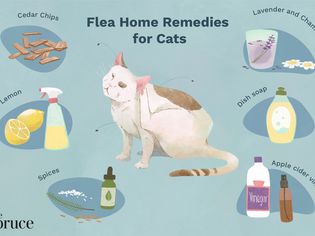
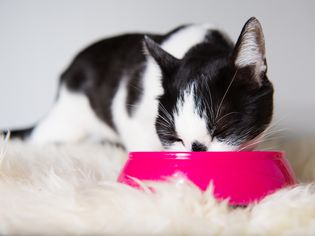
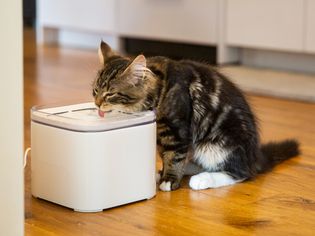
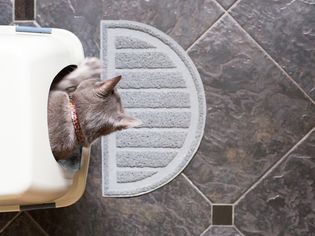
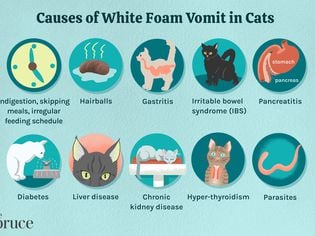
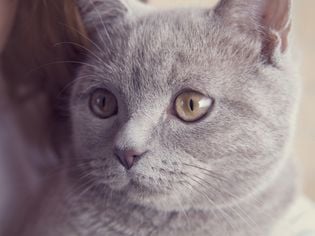

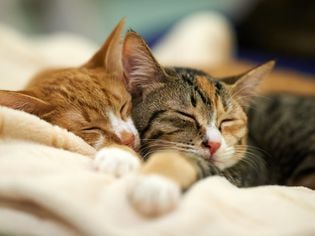
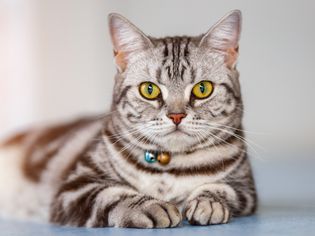
Comments on " 9 Natural Flea Treatments for Cats" :